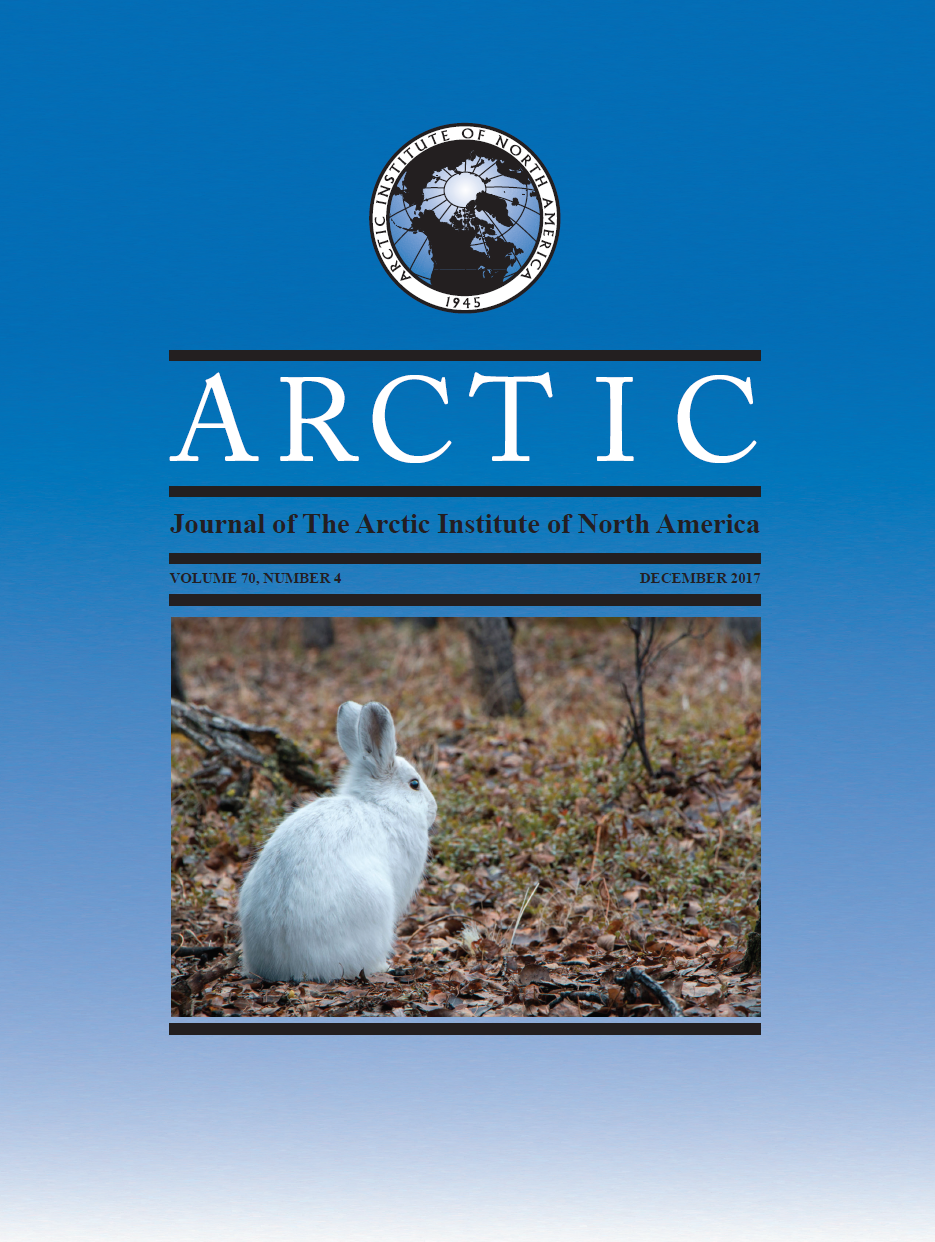Seasonal Movements and Relative Abundance of Bearded Seals (<i>Erignathus barbatus</i>) in the Coastal Waters of the Chukotka Peninsula
DOI :
https://doi.org/10.14430/arctic4682Mots-clés :
phoque barbu, observations visuelles à partir de la côte, péninsule de Tchoukotcha, golfe de l’Anadyr, mer des Tchouktches, migrationRésumé
Il existe peu de renseignements sur la distribution saisonnière du phoque barbu dans le secteur pacifique de l’Arctique. Des phoques barbus (Erignathus barbatus Exleben, 1777) ont été observés sur divers sites côtiers tout au long du sud, de l’est et du nord de la péninsule de Tchoukotcha, Fédération de Russie, pendant les années 1993-1996, 1998-2000, 2002-2005 et 2010-2011. Ces observations permettent d’obtenir des données spatiales et temporelles au sujet de la distribution saisonnière et des déplacements du phoque barbu, ainsi qu’au sujet du nombre relatif de phoques barbus dans les zones côtières. L’hiver, les phoques barbus se rassemblent sur la jeune glace de la partie nord du golfe de l’Anadyr. Le nombre de phoques augmente graduellement au mois de mars. Au printemps (avril-mai), les phoques barbus du nord du golfe de l’Anadyr sont relativement nombreux dans les environs de Nunligran (cap Achen), mais leurs nombres varient beaucoup d’une année à l’autre. Pendant le printemps, les phoques barbus se déplacent vers l’est, le long de la côte, depuis la partie nord du golfe de l’Anadyr vers le détroit de Béring, puis vers le nord lorsque la zone marginale des lisières de glace recule vers le nord. Ces déplacements en direction est et en direction nord se poursuivent en eaux libres, et vers le mois d’août, la migration printanière des phoques barbus le long de la côte de la péninsule de Tchoukotcha prend fin. Pendant les mois d’été d’août et de septembre, les phoques barbus se font rares dans cette zone côtière. La migration automnale vers le sud des phoques barbus n’est pas évidente près de la côte, ce qui suggère qu’elle se produit loin de la rive.


